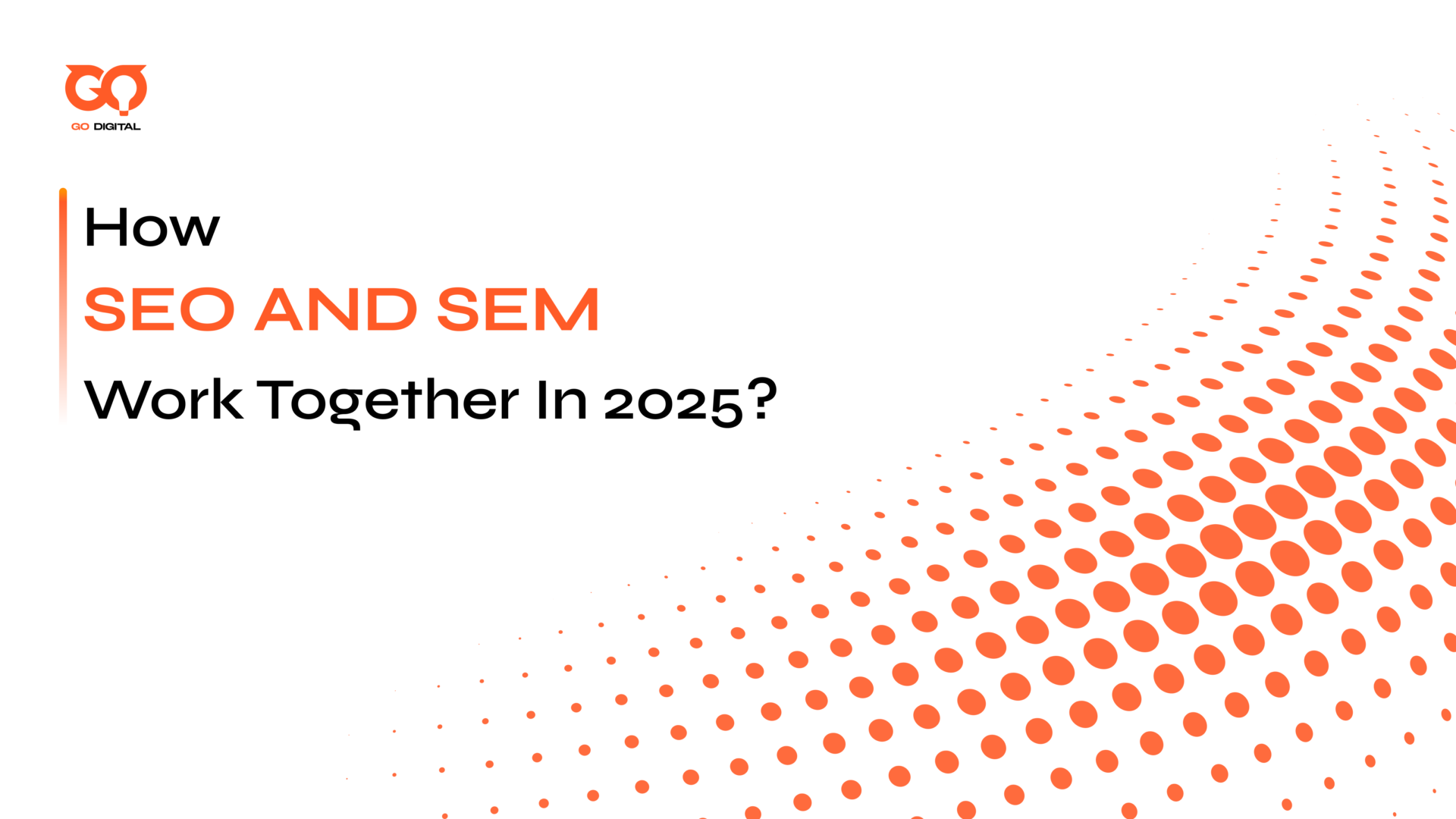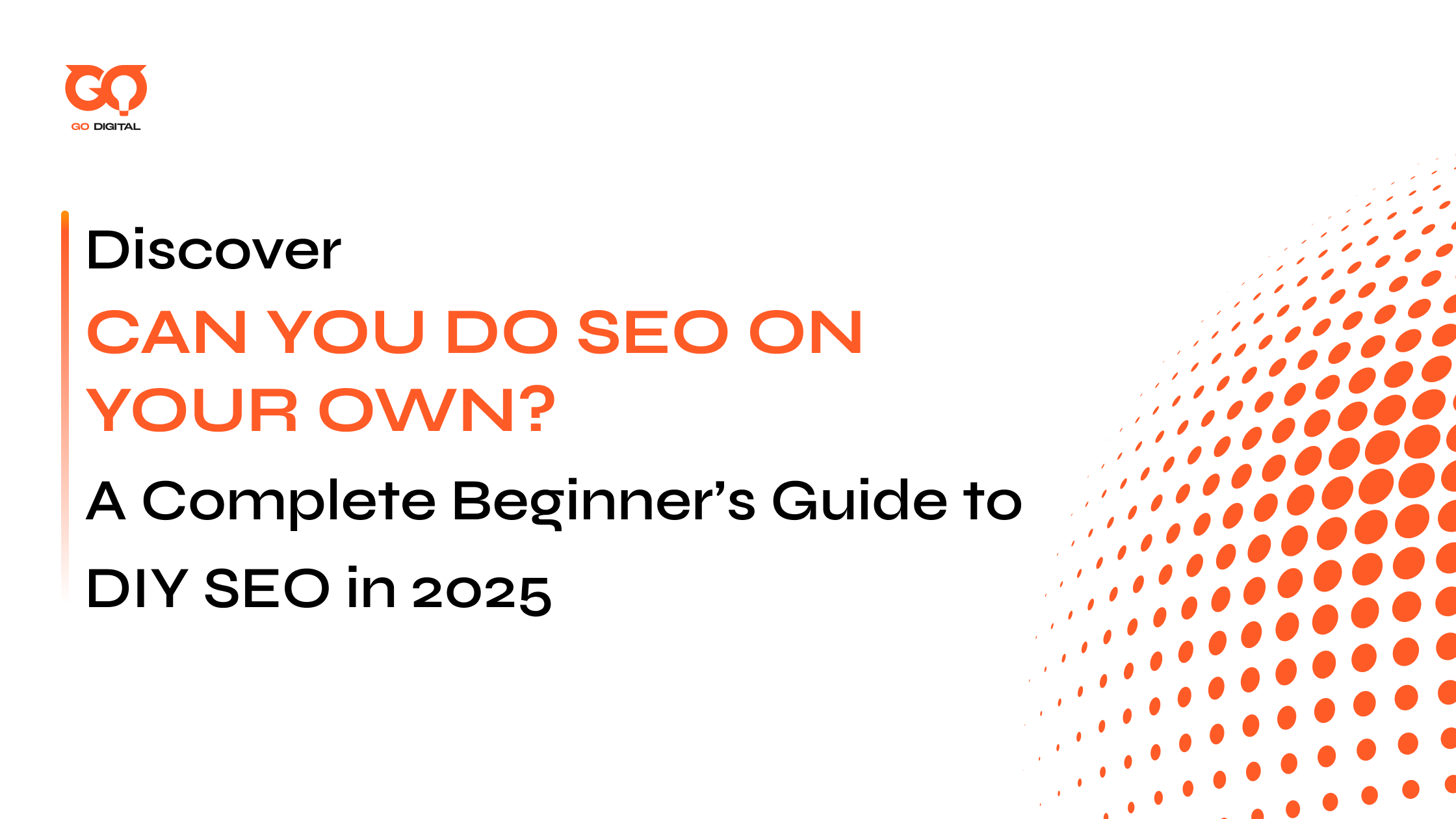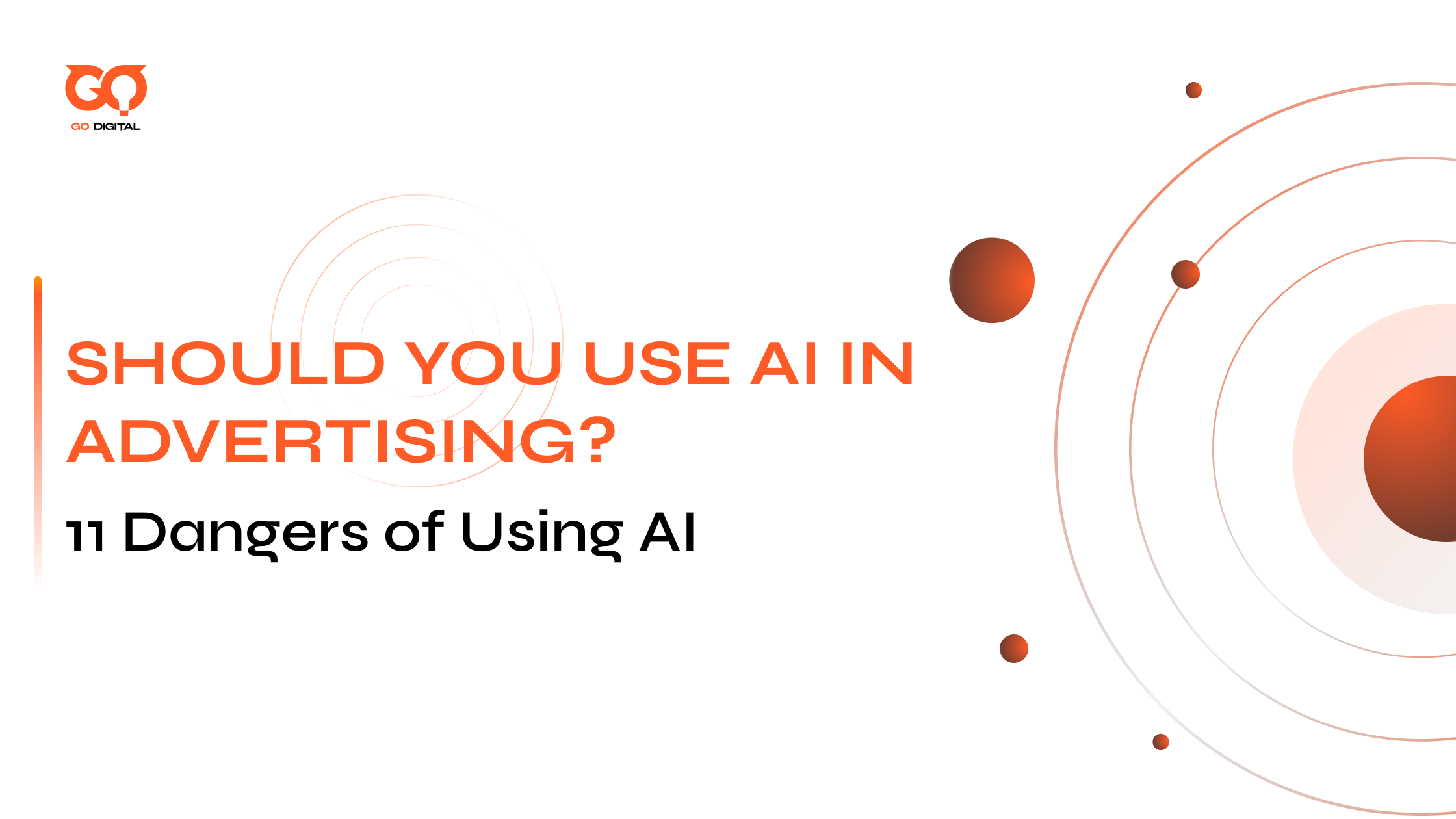More and more businesses are choosing to combine both SEO and SEM instead of relying on just one strategy, like in previous years. The two combined tools are very suitable in times when reaching potential customers is becoming more difficult.
Understanding how to combine SEO and SEM not only helps increase visibility on search engines but also improves click-through rate (CTR) and drives revenue more effectively. Let’s explore with GODI how SEO and SEM support each other to bring optimal results for your marketing strategy
Key Takeaways
|
What Are SEO and SEM? A Simple Explanation
Before diving into how SEO and SEM work together, we need to understand what they are individually.
What is SEO?
Search Engine Optimization (SEO) is the process of optimizing a website to improve its visibility in organic (non-paid) search results on platforms like Google, Bing, and Yahoo.
SEO is more important than ever. According to a 2019 BrightEdge study, organic search delivers 53% of all website traffic, making it the single largest driver of online visits. With more than 8.5 billion searches happening every day on Google, and Google holding 91% of the global search engine market, SEO offers unmatched potential for businesses to reach their target audiences.
The impact is so significant that the global SEO industry is forecast to reach $122.11 billion by 2028. That’s because SEO doesn’t drive traffic—it builds long-term brand authority, user trust, and high-quality leads at scale.
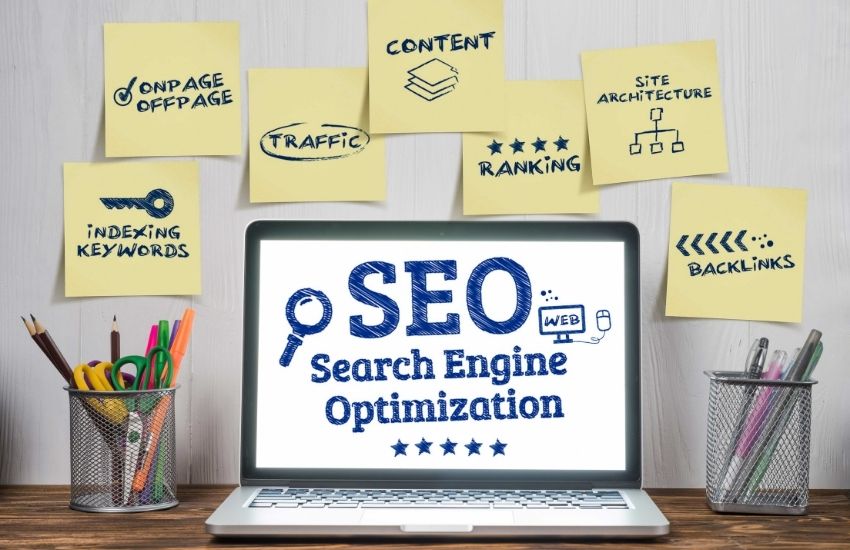
SEO is the process of optimizing a website to improve its visibility in natural search results
Core elements of SEO include:
- On-page SEO: Optimizing content, keywords, titles, and internal linking
- Off-page SEO: Earning backlinks from reputable websites
- Technical SEO: Improving site speed, mobile responsiveness, and crawlability
For businesses aiming for sustainable growth in 2025 and beyond, SEO isn’t optional it’s foundational.
What is SEM?
Search Engine Marketing (SEM) is a broader term that encompasses paid strategies to gain visibility on SERPs. This primarily includes Pay-Per-Click (PPC) advertising on platforms like Google Ads and Bing Ads. Understanding how SEO and SEM work together requires acknowledging the role of paid advertising.
Return on investment, SEM is extremely efficient. Industry benchmarks show paid search often delivers 2–8× return on ad spend. For example, WordStream reports that on average PPC campaigns return ~$2 for every $1 spent (about 200% ROI).
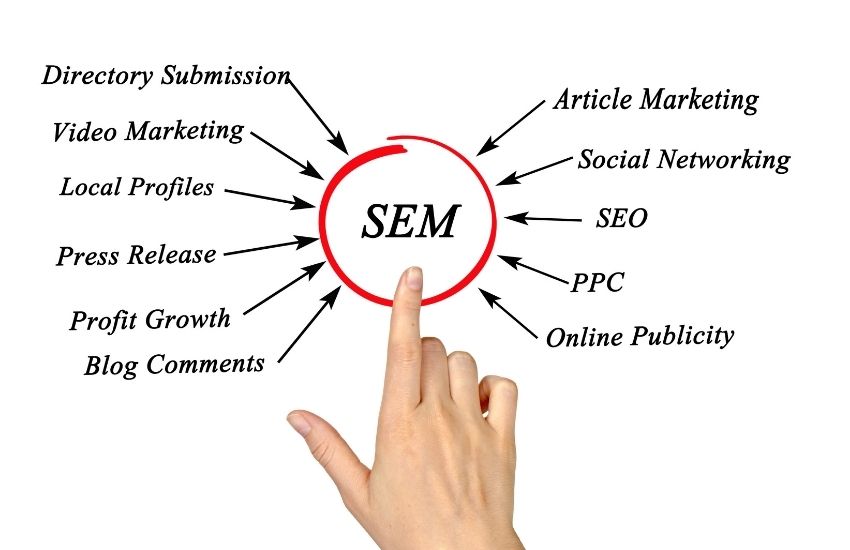
SEM is a broader term that includes paid strategies to gain visibility on SERPs
SEM allows businesses to place ads in front of users who are actively searching for related terms. Some benefits include:
- Immediate traffic generation
- Precise targeting options (demographics, location, time)
- Real-time testing of marketing messages
Why Using SEO and SEM Together Works Better
Now that we understand each strategy, why should we use them together?
Get Found More Often on Search Engines
Understanding how SEO and SEM work together means realizing your website can occupy many positions on the SERP – an ad slot and an organic listing. The dual presence significantly increases your chances of getting clicked. According to Google, it can boost total clicks by up to 89% compared to relying on SEO or SEM alone.
Build Trust Through Repetition (The Frequency Effect)
As explained by Wallaroo Media, the Frequency Effect describes how repeated exposure to a brand in search results builds credibility. Even if users don’t click the ad the first time, seeing your brand consistently in both paid and organic results increases familiarity and trust.
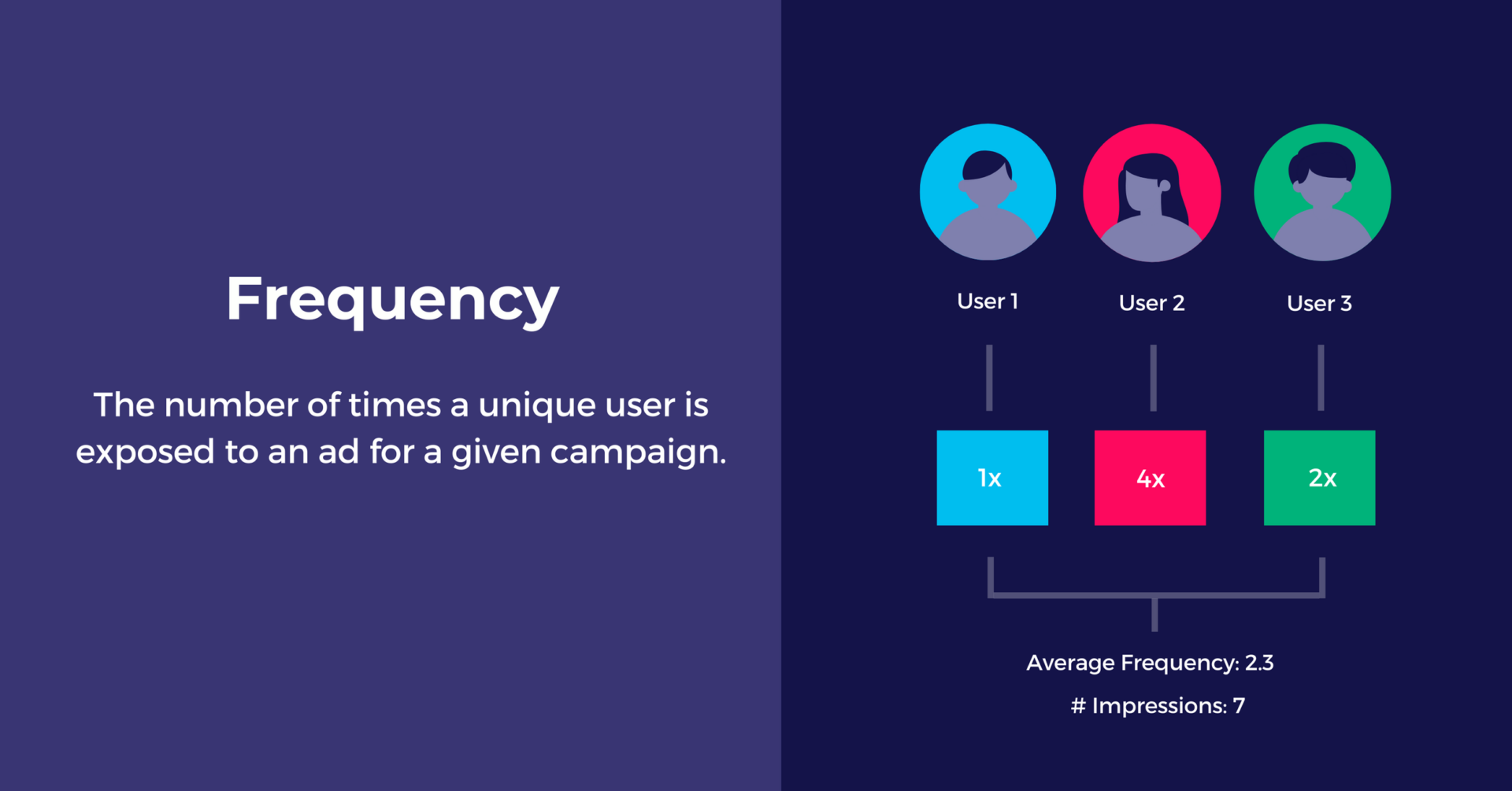
Moderate repetition can build customer trust (source: Pathlabs)
Use SEM Data to Improve Your SEO
PPC campaigns give you rapid feedback on which keywords and ad copy work best. You can use the data to optimize your SEO content strategy – refining titles, meta descriptions, and blog topics based on actual user behavior.
Save Budget by Avoiding Keyword Overlap
When both teams communicate, you can avoid bidding on keywords that you already dominate organically, thus reallocating your budget to other terms where SEO isn’t yet strong. This is a smart tactic for combining PPC with SEO without unnecessary spending.
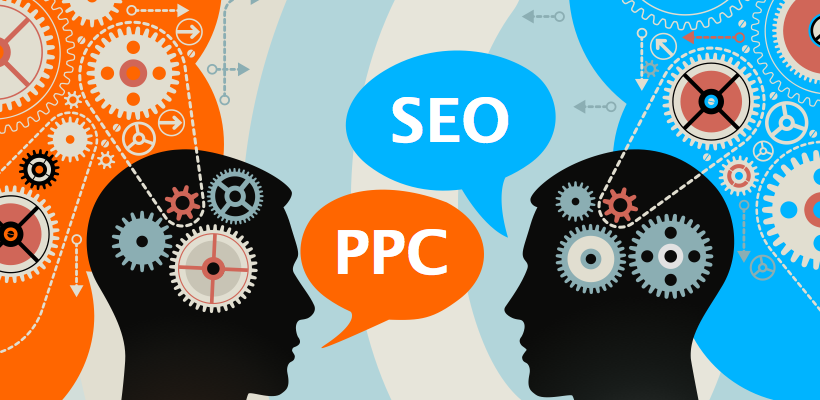
Use SEO and PPC together for increased effectiveness (Source: Subiz)
How SEO And SEM Work Together?
Successful integration depends on strategy, alignment, and constant communication between teams. Understanding how SEO and SEM work together at a practical level is important.
Align Keywords Between Organic and Paid Teams
Keyword alignment between SEO and SEM is fundamental to initial success. SEO typically focuses on long-tail, informational keywords. SEM, on the other hand, focuses on high-converting, commercial keywords.
Although different, it is important to choose the most relevant and effective keywords for both. Choosing compatible keywords helps the two strategies complement each other, showing maximum visibility. In addition, SEO and SEM integration strategy makes sure coverage across the customer journey.
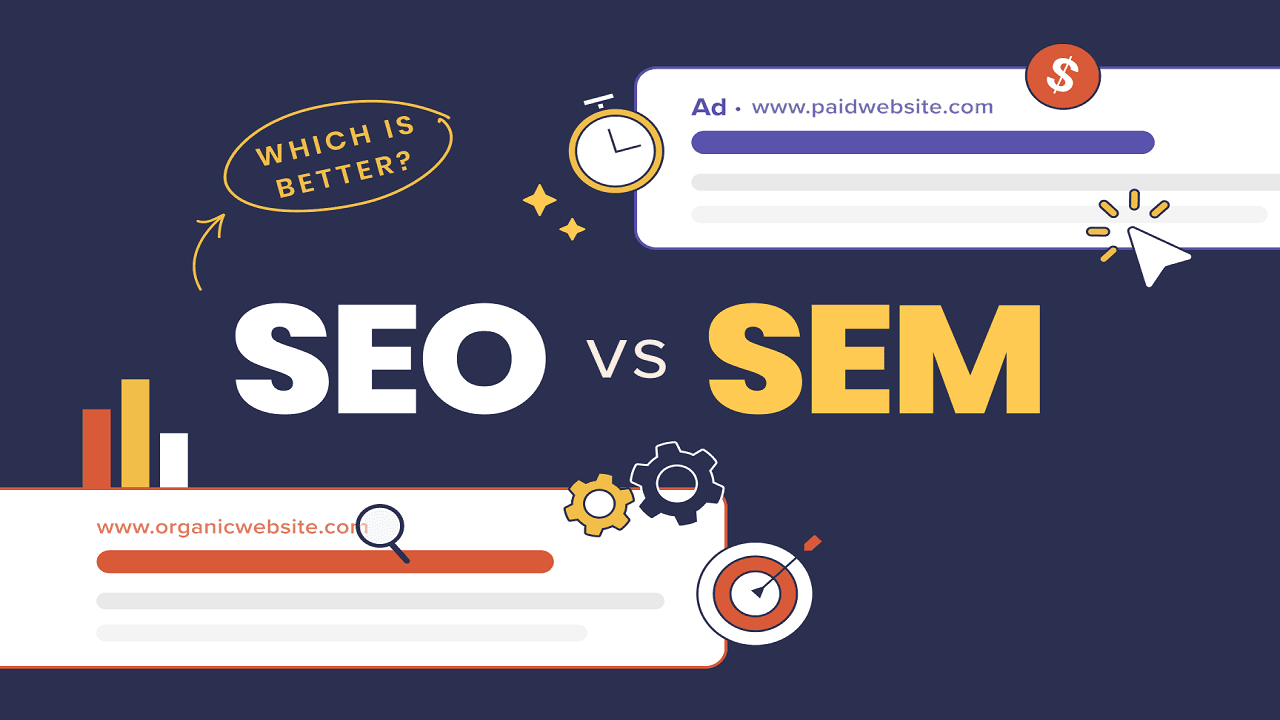
Integrated SEO and SEM strategy increases reach across the entire customer journey
Make Sure Your Ads and Pages Say the Same Thing
Make your ad and landing page provide the same information. Consistency between your ad and landing page is important for a smooth user experience. If your ad says “Free Shipping,” your landing page should clearly emphasize this information to avoid confusion.
Consistency across SEO and SEM channels helps build trust, improve PPC quality scores, and increase conversions.
Use Analytics to Track What’s Working and Improve It
Use analytics to track what’s working and improve it. Tools like Google Analytics 4 and Google Search Console are essential when integrating SEO and SEM. They help track metrics like click-through rate (CTR), bounce rate, and conversions.
Tracking metrics closely will help identify areas for improvement and optimize your strategy, keywords, and bids, so that both SEO and SEM channels work more effectively together.
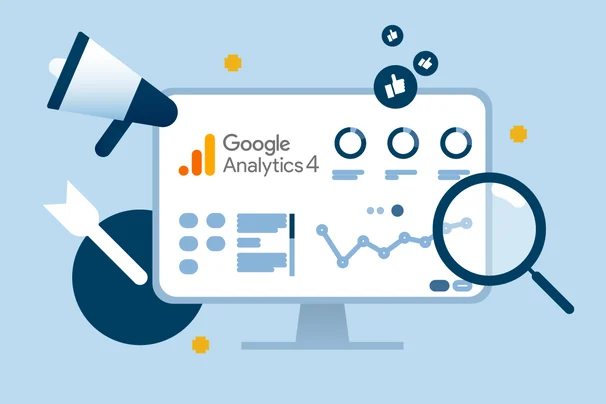
Use GA4 to track performance and improve your website
Focus on Website Authority
Building website authority through SEO improves organic rankings and supports SEM campaigns. Search engines and advertising platforms often favor websites with high authority.
The advantages include improved ad performance and quality scores, reduced CPC, and increased visibility. If the website is optimized with quality content and strong backlinks, it will help improve authority and support SEM.
Integrate with Ad Extensions
Ad extensions enhance your SEM campaigns and integrate with your SEO strategy. Extensions like address and phone number in your ads can enhance the user experience and increase conversions.
When combined with local SEO, your ads can easily reach customers searching for products/services near them, increasing CTR and conversions.
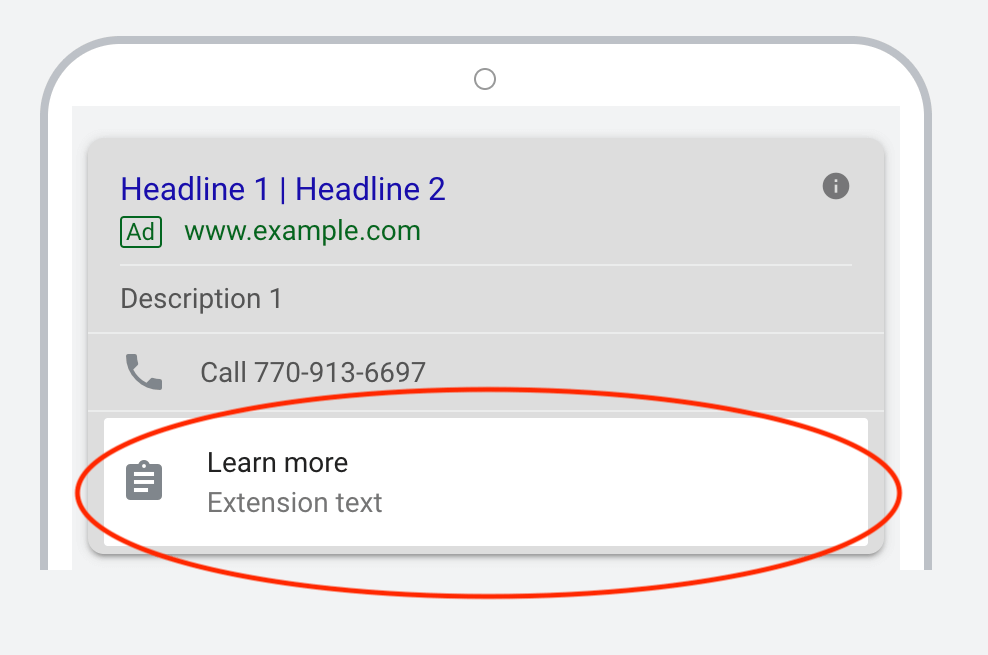
Ad extensions enhance your SEM campaigns with your SEO strategy (source: internet)
Shared A/B Testing
A/B testing helps optimize both landing pages and ads in your SEO and SEM strategy. By testing elements like headlines, messages, and calls-to-action, you can determine what works best to attract and convert users.
For example, if you discover that a certain landing page performs better with a certain ad copy or message, you can apply that finding to improve your SEO copy and paid advertising. Shared A/B testing allows both strategies to be continually optimized based on real user behavior.
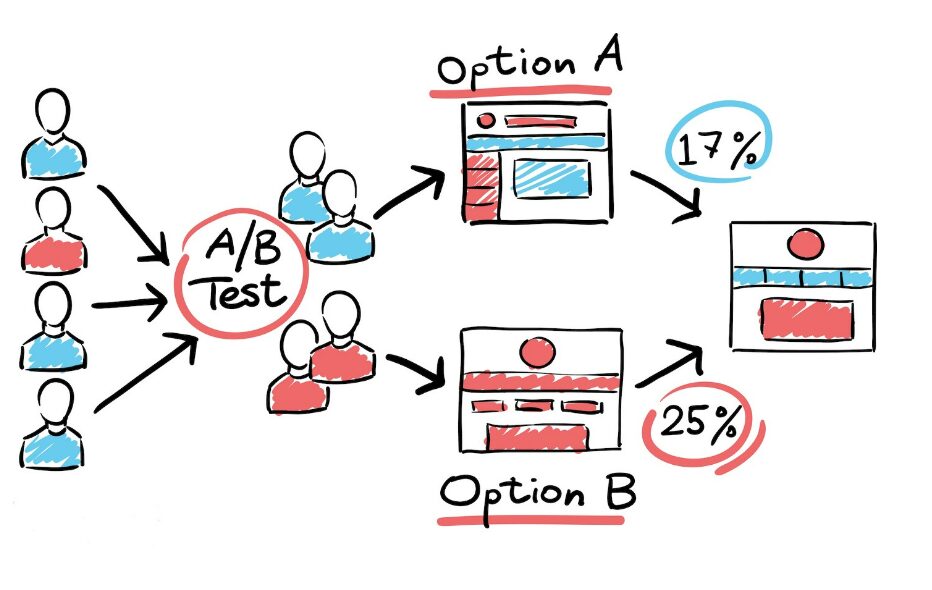
Understand how SEO and SEM work together to increase effectiveness
Getting Your SEO and SEM Teams to Work Smoothly Together
Integration is only possible if both teams are aligned in goals and communication.
Problems That Happen When Teams Don’t Communicate
When SEO and SEM teams operate in silos, common problems include:
- Competing for the same keywords (wasting budget)
- Inconsistent messaging is hindering the potential of how SEO and SEM work together.
- Conflicting KPIs and reporting structures
The issues can reduce performance and create internal friction.
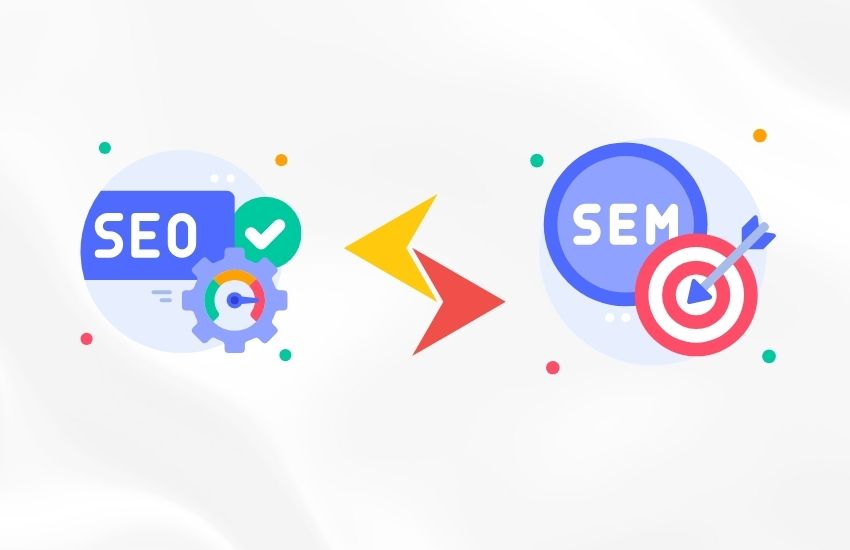
When SEO and SEM teams work separately, they can compete for the same keywords wasting budget
Real Examples of Team Decisions That Hurt Performance
When SEO and SEM teams don’t work closely together, poor decisions can lead to wasted budget and reduced performance. Here are some real-world examples:
- The PPC team bids on branded keywords even though the SEO results already rank #1, resulting in unnecessary ad spend. A study from Search Engine Journal highlighted a business spending over $30,000 per month on branded keyword ads without seeing any significant added value.
- The SEO team focuses on informational keywords with no commercial intent, such as “how search engines work.” While it may increase traffic, it doesn’t drive conversions and hurts performance. According to an Ahrefs study (2023), around 96.55% of content receives no organic traffic from Google, mainly due to a lack of backlinks, poor alignment with user intent, or failure to be indexed.
- SEO and SEM landing pages are misaligned, creating a fragmented user experience and lowering conversion rates.
To avoid these issues, teams should hold regular check-ins, share data openly, and pursue common goals. Alignment across channels helps maximize performance and prevents unnecessary internal competition.
| No. | Task | Description |
| 1 | Regular Check-ins to Share Data | SEO and SEM teams should have regular meetings to share keyword data, search trends, and customer insights. |
| 2 | Use a Shared Dashboard | Both teams should use a shared dashboard to track and evaluate performance across both SEO and SEM channels. |
| 3 | Clarify Roles | – SEO focuses on long-tail, informational keywords. – SEM focuses on high-converting commercial keywords. |
| 4 | Regularly Review Budget | Ensure there is no overlap in budget for keywords that already rank high in organic search results. |
When Should You Use SEO, SEM, or Both?
There’s no universal rule, the best choice depends entirely on your business context, goals, and budget.
A Simple Framework to Choose Based on Goals & Budget
| Goal | Use SEO | Use SEM | Use Both |
| Long-term traffic growth | ✅ | ❌ | ✅ |
| Immediate traffic spike | ❌ | ✅ | ✅ |
| Limited budget | ✅ | ❌ | ❌ |
| High competition keywords | ✅ (eventually) | ✅ (immediately) | ✅ |
- Long-term traffic growth: SEO is essential because it builds organic authority and sustainable traffic over time. SEM alone won’t maintain traffic once the ad spend stops.
- Immediate traffic spike: SEM (paid ads) can deliver fast visibility and clicks. SEO takes longer to ramp up, but supports sustained growth.
- Limited budget: SEO is more cost-effective in the long run, especially if you cannot afford ongoing paid campaigns.
- High competition keywords: SEM allows immediate bidding for competitive terms, while SEO requires persistent effort but eventually helps reduce ad costs.

Using SEO, SEM, or both depends on your business context, goals, and budget
Smart Budget Planning Over Time (Short-Term vs Long-Term)
In the short term, SEM delivers quick wins — immediate visibility and conversions through paid campaigns.
Over time, SEO reduces reliance on paid ads by building authority, improving rankings, and increasing organic traffic.
The ideal strategy is to:
- Invest heavily in SEM early to gain traction and market share quickly.
- Gradually shift focus to SEO as your brand awareness and domain authority grow.
- Reallocate SEM budget to strategic campaigns such as promotions, product launches, or retargeting once organic traffic picks up.
The blended approach makes sure you’re not overly dependent on one channel, optimizing both short-term results and long-term growth.
What Can Go Wrong When You Mix SEO and SEM (and How to Fix It)
Even the best strategies have pitfalls. Awareness is the first step to prevention when considering how SEO and SEM work together.
Keyword Cannibalization: Paid Ads Stealing Organic Clicks
If you rank #1 organically for a keyword, running a paid ad for it can cannibalize your traffic. Google might show your ad instead of the organic listing, meaning you pay for traffic you could’ve gotten for free.
Solution: Use tools like Google Ads’ Auction Insights and Search Console to watch performance. Consider pausing ads where organic listings dominate.
Tracking Trouble: Measuring Across Channels the Right Way
Tracking across SEO and SEM is tricky, especially with different attribution models. Paid ads often get credit for conversions even if SEO started the journey.
Solution: Set up multi-channel attribution and use UTM parameters to tag SEM campaigns. Analyze the full conversion path, not the last click.
Conclusion:
Choosing between search engine marketing vs search engine optimization is outdated. What really matters is understanding how SEO and SEM work together – and leveraging that synergy to grow your business. By combining PPC with SEO, aligning your teams, and leveraging the strengths of each, you create a powerful, data-driven strategy that drives visibility, trust, and conversions.
In 2025, the winners in digital marketing won’t be those who pick sides, it will be those who integrate, adapt, and grow. It’s time to make SEO and SEM integration strategies a core part of your digital playbook.
That’s where Golden Owl Digital can help. As experts in outsourced SEO services, we ensure your SEO and SEM work hand-in-hand from keyword alignment to landing page consistency. Contact Golden Owl Digital today to build a unified, high-ROI search strategy.


